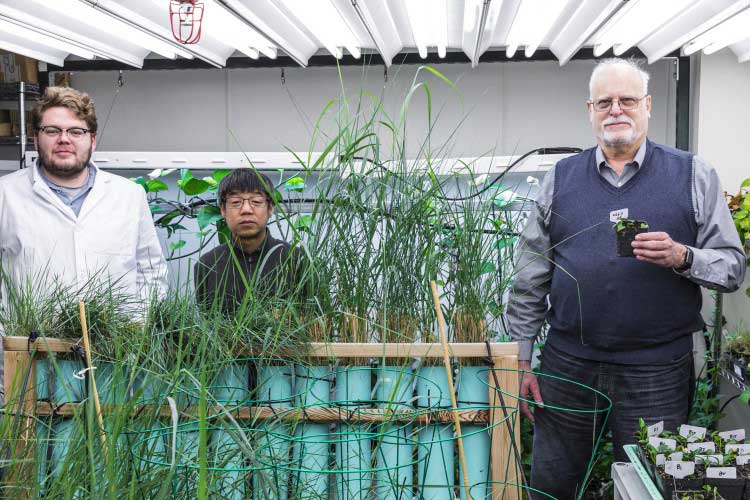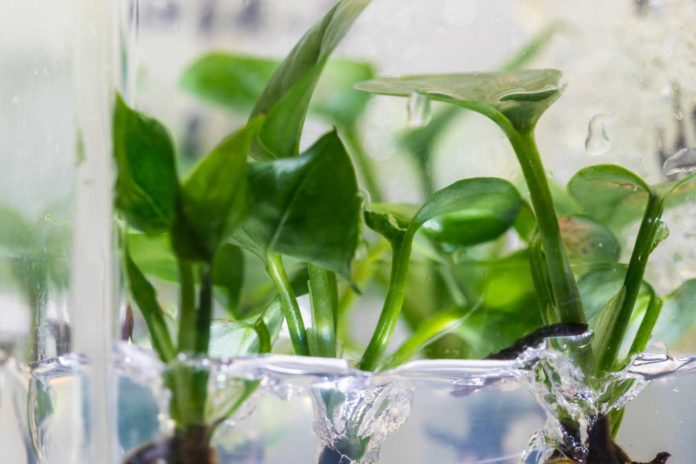Most of us use air filters to keep our homes clean and pollution-free. However, these air filters involve small hazardous molecules such as chloroform or benzene that have been linked to cancer.
Now, scientists at the University of Washington have genetically modified a common houseplant — pothos ivy — to remove chloroform and benzene from the air around it. The plant expresses a protein, called 2E1 that transforms these compounds into molecules that the plants can then use to support their own growth.
Senior author Stuart Strand, who is a research professor in the UW’s civil and environmental engineering department, said, “People haven’t really been talking about these hazardous organic compounds in homes, and I think that’s because we couldn’t do anything about them. Now we’ve engineered houseplants to remove these pollutants for us.”
The group chose to utilize a protein called cytochrome P450 2E1, or 2E1 for short, which is available in all mammals, including humans. In our bodies, 2E1 transforms benzene into a concoction called phenol and chloroform into carbon dioxide and chloride particles. Be that as it may, 2E1 is situated in our livers and is turned on when we drink alcohol. So, it’s not accessible to enable us to process toxins in our air.
Senior author Stuart Strand said, “People haven’t really been talking about these hazardous organic compounds in homes, and I think that’s because we couldn’t do anything about them. Now we’ve engineered houseplants to remove these pollutants for us.”
“We decided we should have this reaction occur outside of the body in a plant, an example of the ‘green liver’ concept. And 2E1 can be beneficial for the plant, too. Plants use carbon dioxide and chloride ions to make their food, and they use phenol to help make components of their cell walls.”
Scientists primarily made an engineered adaptation of the gene that fills in as directions for making the rabbit type of 2E1. At that point, they brought it into pothos ivy with the goal that every cell in the plant communicated the protein. Pothos ivy doesn’t bloom in mild atmospheres so the genetically modified plants won’t have the capacity to spread by means of dust.
Lead author Long Zhang, who is a research scientist in the civil and environmental engineering department, said, “This whole process took more than two years. That is a long time, compared to other lab plants, which might only take a few months. But we wanted to do this in pothos because it’s a robust houseplant that grows well under all sort of conditions.”

Scientists then tested how well their modified plants could expel the pollutants from air contrasted with normal pothos ivy. They put the two kinds of plants in glass cylinders and afterward included either benzene or chloroform gas into each cylinder. More than 11 days, the group followed how a concentration of each pollutant changed in each tube.
For the unmodified plants, the concentration of either gas didn’t change over time. But for the modified plants, the concentration of chloroform dropped by 82 percent after three days, and it was almost undetectable by day six. The concentration of benzene also decreased in the modified plant vials, but more slowly: By day eight, the benzene concentration had dropped by about 75 percent.
In order to detect these changes in pollutant levels, the researchers used much higher pollutant concentrations than are typically found in homes. But the team expects that the home levels would drop similarly, if not faster, over the same time frame.
Plants in the home would also need to be inside an enclosure with something to move air past their leaves, like a fan.
The team is currently working to increase the plants’ capabilities by adding a protein that can break down another hazardous molecule found in home air: formaldehyde, which is present in some wood products, such as laminate flooring and cabinets, and tobacco smoke.
These are all stable compounds, so it’s really hard to get rid of them,” Strand said. “Without proteins to break down these molecules, we’d have to use high-energy processes to do it. It’s so much simpler and more sustainable to put these proteins all together in a houseplant.”
The team published its findings Dec. 19 in Environmental Science & Technology.
